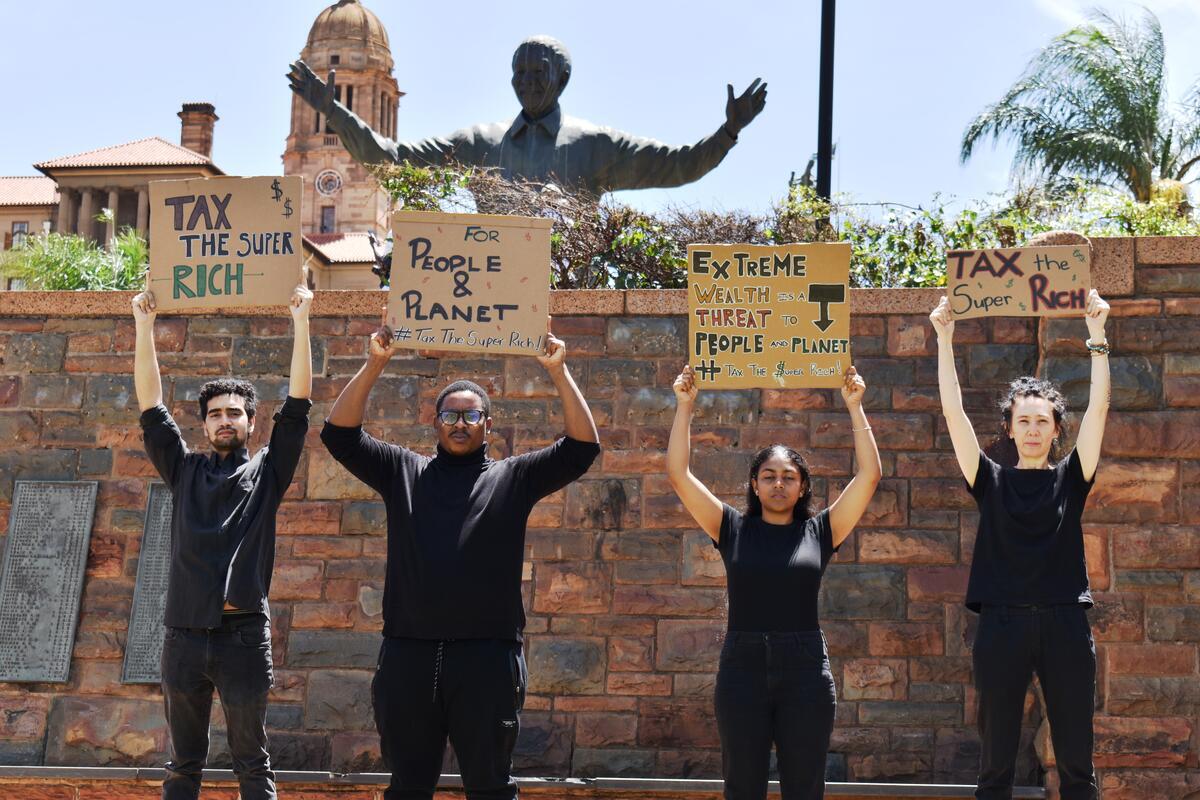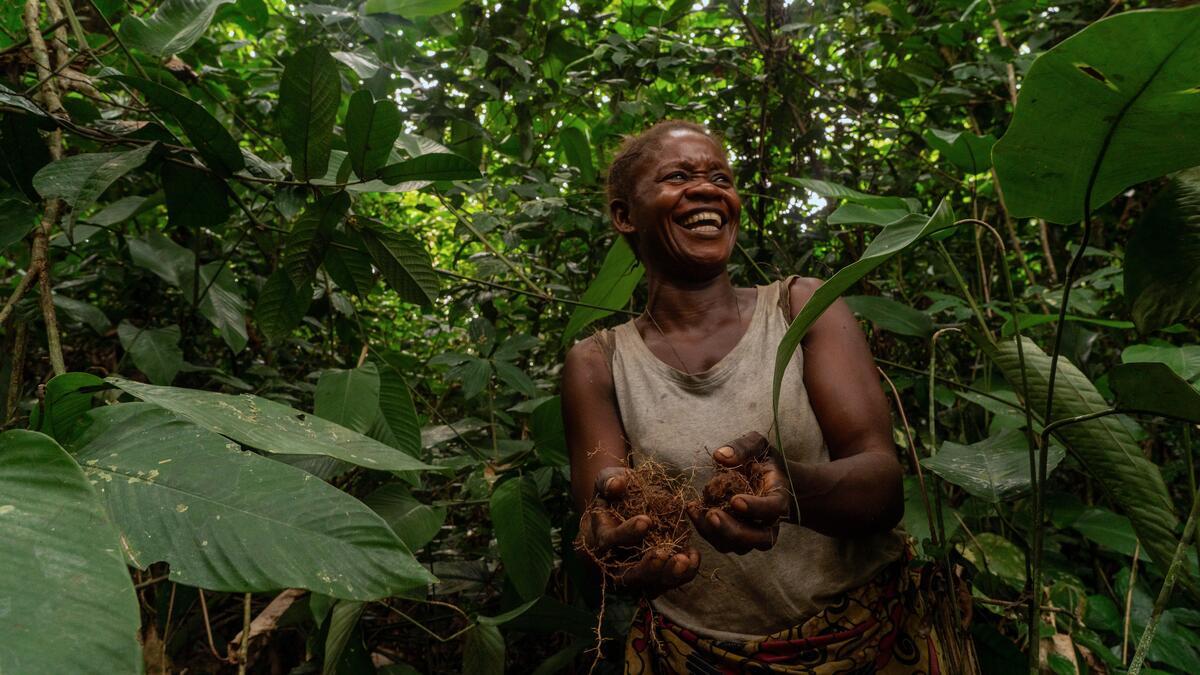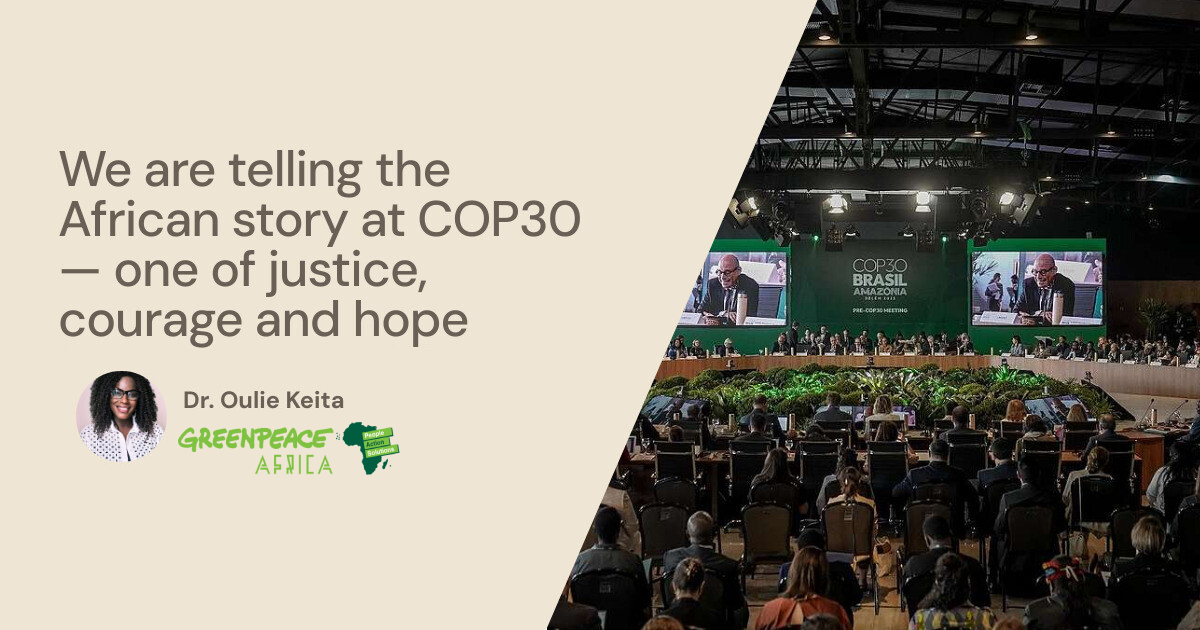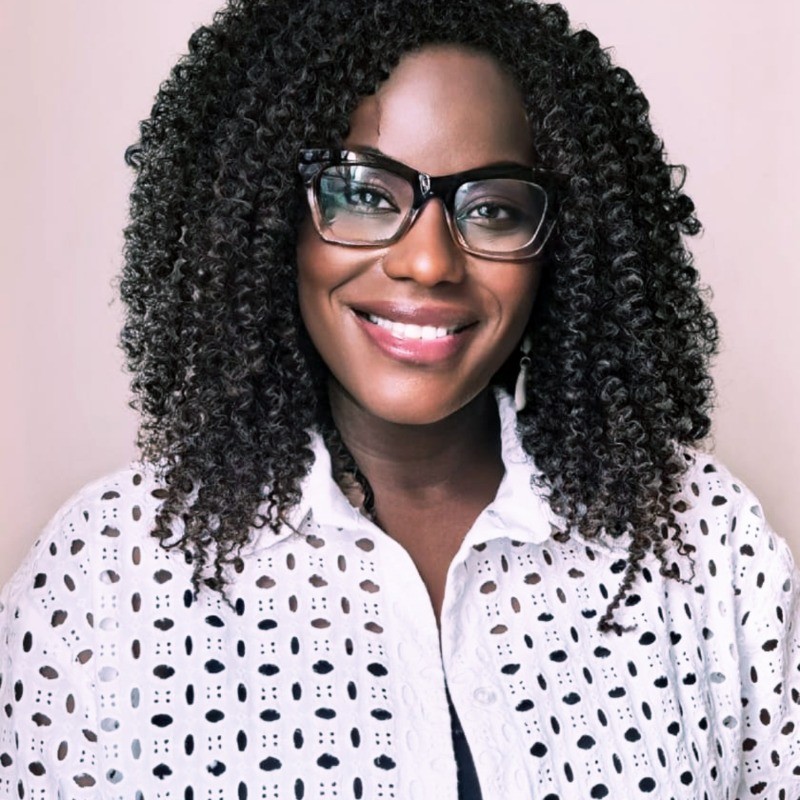
Dr. Oulie Keita
Greenpeace Africa Executive Director
If you want to know what climate leadership looks like, look to Africa’s youth.
This International Youth Day, I am not just celebrating young people. I am amplifying them.
From the forests of the Congo Basin to the flood-hit streets of Durban, young people across Africa are not waiting for permission to lead. They are claiming their future, protecting their communities, and defending our planet, with grit, courage, and unstoppable heart.
They are cleaning polluted beaches. Challenging governments. Documenting injustice. Blocking fossil fuel summits. Educating their peers. Planting food gardens. Fighting for forest justice and food sovereignty.
And they are doing all of this, often without recognition, funding, or platforms, while facing down climate breakdown, environmental destruction, and political indifference.
Today, Greenpeace Africa is powered by 1,360 youth volunteers across the continent. Each of them represents not just resistance but real, local solutions.
This is a tribute to them.
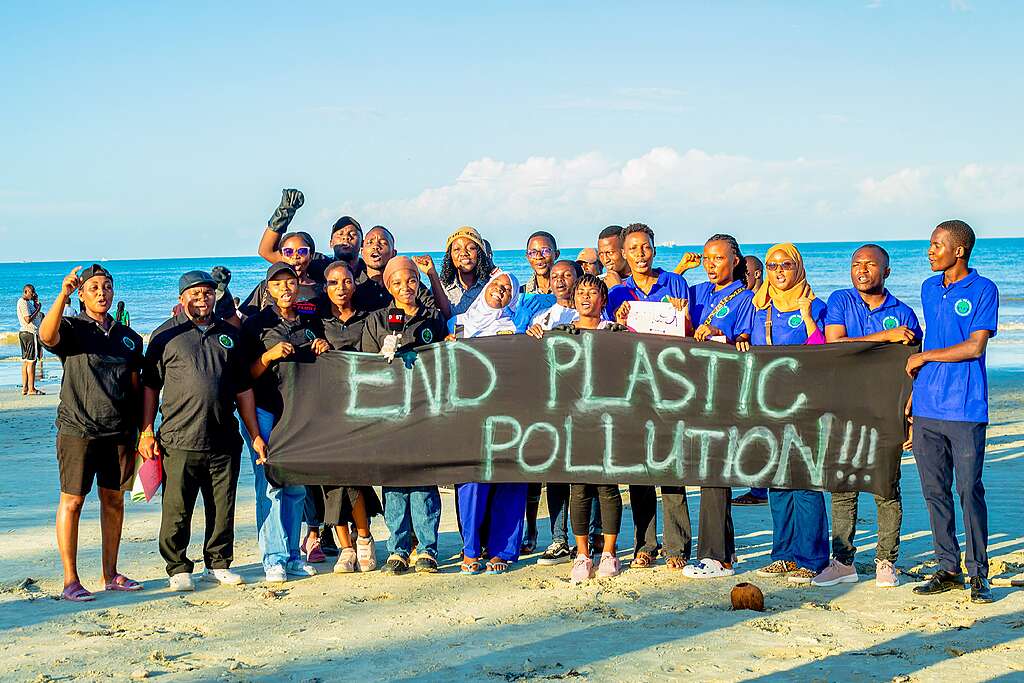
🇸🇳 Aïssatou’s fight for Senegal’s ocean
In the coastal town of Joal-Fadiouth, Aïssatou Ndiaye, 23, grew up surrounded by the rhythm of the ocean. But over time, that rhythm changed. She watched the beaches of her childhood become choked with plastic, while foreign trawlers decimated local fish stocks.
I realized we can’t talk about food without talking about the ocean. My uncle couldn’t fish anymore. The plastic we threw away was coming back to us, in our water, in our fish.
Aïssatou joined Greenpeace Africa as a volunteer during the Ocean Protection campaign in Senegal. She now organizes beach cleanups, leads community dialogues with women fish processors, and teaches schoolchildren about the link between pollution and health.
For her, ocean protection is not just an environmental issue. It is about dignity, food, and justice.
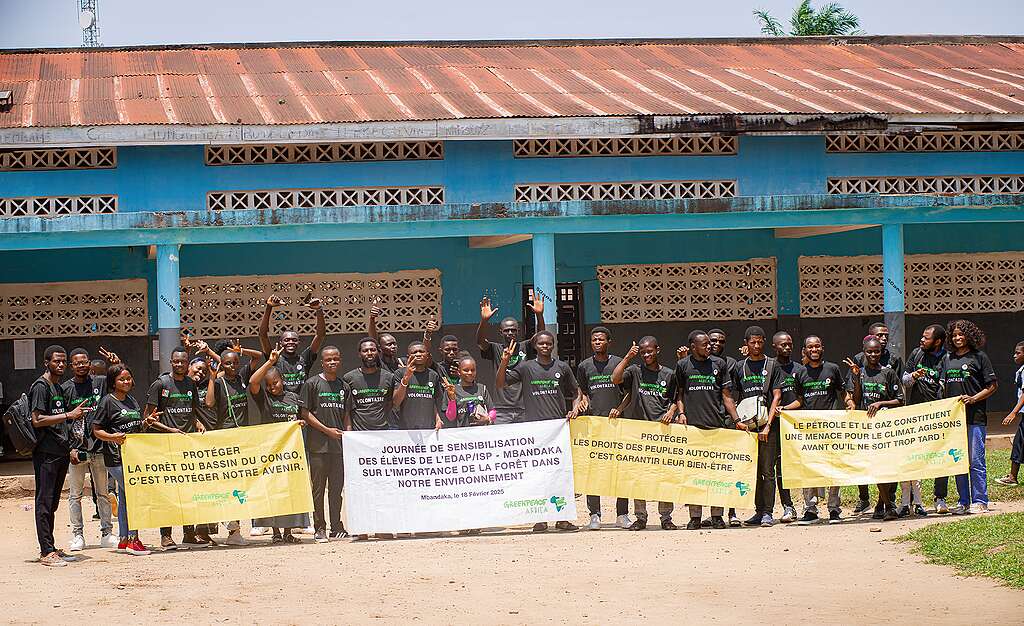
🌳 Ekuri and Esther: defending the Congo Basin, defending our future
From Cameroon to the DRC, the Congo Basin Forest – the second largest tropical rainforest on Earth – is under siege. But it is also under protection, thanks to young African activists like Ekuri Brian Akom and Esther Mambete.
In Cameroon, 26-year-old Ekuri saw how logging and agribusiness interests were tearing through ancestral lands, displacing Indigenous communities, and silencing local voices. For him, forest protection is inseparable from human rights.
When the forest is destroyed, it’s not just trees that are lost. It’s homes, cultures, and identities.
Ekuri joined Greenpeace Africa to challenge this system. Since then, he’s led campaigns defending community land rights, trained youth in forest justice, and stood with Indigenous groups demanding meaningful consultation and legal recognition.
In the Democratic Republic of Congo, 29-year-old Esther Mambete began as a student volunteer during the “Give the Congo Basin Forests a Chance” campaign. What started with mobilizing students soon grew into filming threatened forests, documenting local stories, and leading awareness drives in Kinshasa and beyond.
Fighting to protect our planet is a noble cause. But it must be led by those who live closest to what we’re trying to save.
For both Esther and Ekuri, defending the Congo Basin is not just about conservation. It is about justice, sovereignty, and ensuring that the people who have protected these forests for generations are finally heard, respected, and empowered.

🇿🇦 Shafeeqah’s defiance in Durban
In Durban, South Africa, 32-year-old Shafeeqah Goolam Hoosen turned grief into action after floods displaced thousands. She joined Greenpeace Africa’s “Return to Sender” action, bringing broken doors from destroyed homes to the gates of a fossil fuel conference.
We were told to leave or be arrested. But I stood my ground, for the people whose lives were uprooted.
Her act of defiance delivered a loud message: our pain will not be ignored.
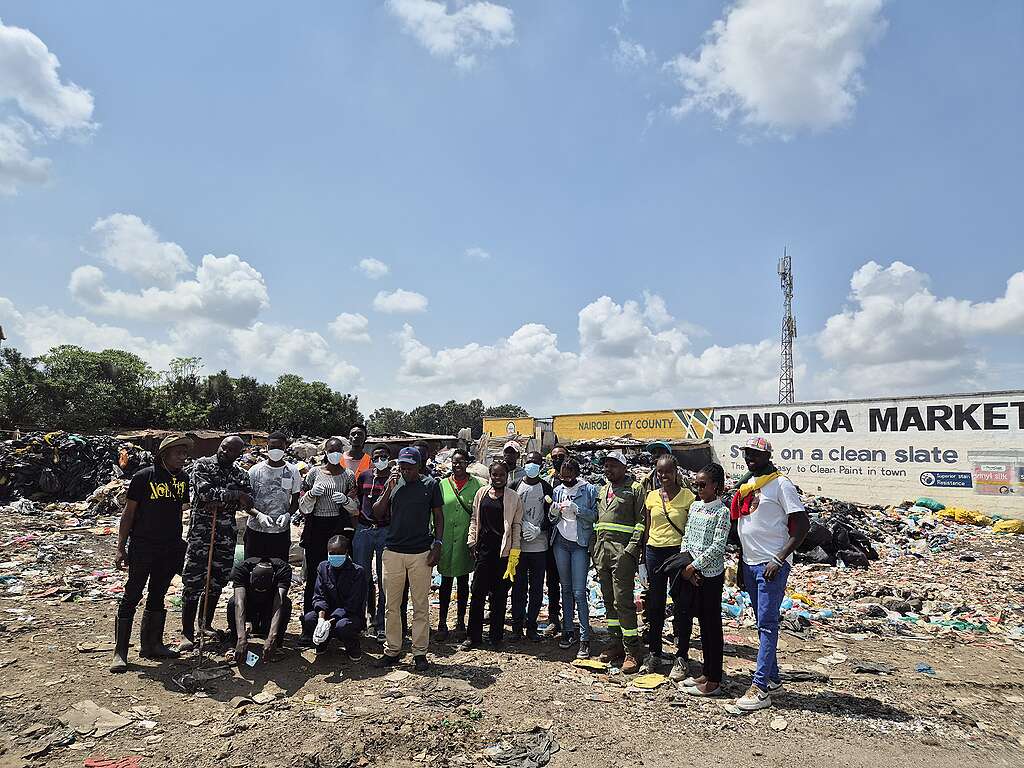
🇰🇪 Michael’s fire for justice in Kenya
In Kenya, 24-year-old Michael Wafula saw floods near Lake Victoria and towering waste at Dandora dumpsite. He immediately joined Greenpeace Africa through social media and began organizing in his community.
It’s in my DNA, the fight for justice.
Today, he’s exposing illegal deforestation and mobilizing people around waste management and accountability.
💚 This is what climate leadership looks like
While much of the world sees Africa as a climate victim, these young people are flipping the script. They are:
- Organizing recovery efforts after floods and displacement.
- Mobilizing against toxic pollution and plastic dumping.
- Defending Indigenous forests against corporate greed.
- Challenging false solutions and extractivism with real, people-powered alternatives.
They are not just demanding climate justice. They are delivering it.
Every campaign. Every cleanup. Every rally, training, or protest we organize is powered by people like Ekuri, Seydou, Shafeeqah, Esther, and Michael.
But they are not alone.
Today, 1,360 Greenpeace Africa volunteers across the continent are building a movement that is local, radical, just and full of heart. They’re doing this not for attention, but for generations yet to come.
And on this International Youth Day, I want to say: I see you. I honour you. And I stand with you.
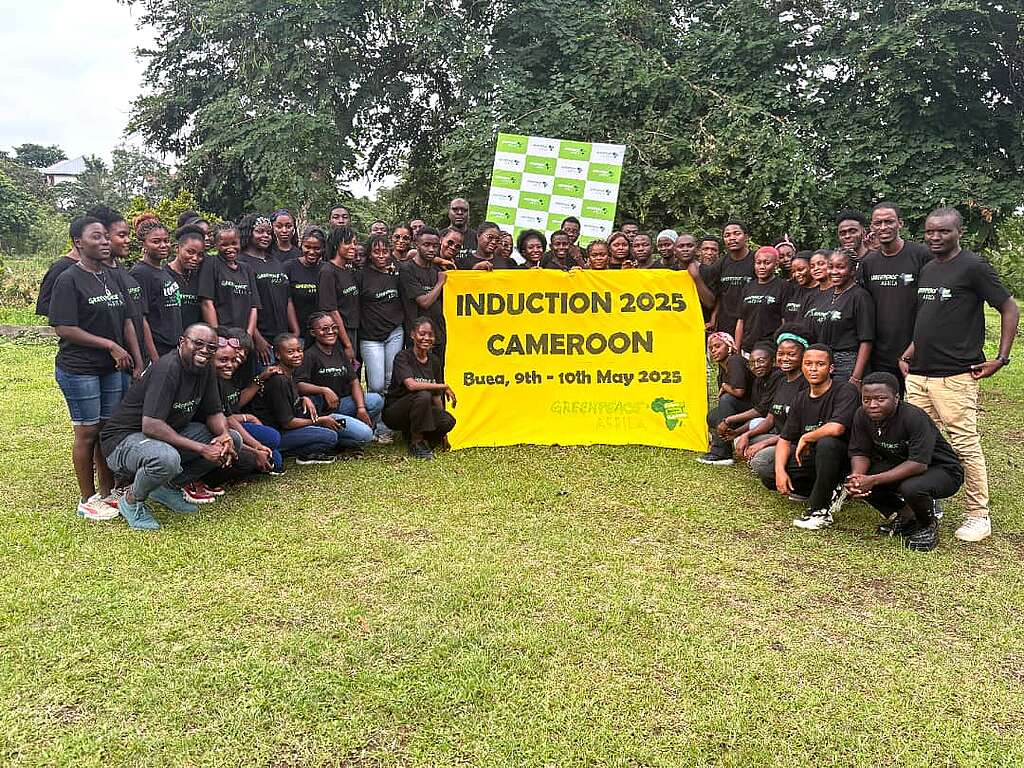
✊🏾 Join the movement
To every African youth reading this, we see you. We honour you. We stand with you.
👉🏿 Want to take action? Here’s how you can join the fight:
- Volunteer with Greenpeace Africa in your country.
- Share this story on your platforms and help it reach others.
- Speak up: online or offline against environmental injustice.
- Start small: a cleanup, a workshop, a poster, a petition. Your voice matters.
Because the climate movement isn’t happening somewhere else. It is happening right here, right now, and it’s powered by people like you.
International Youth Day is celebrated every year on August 12th.

